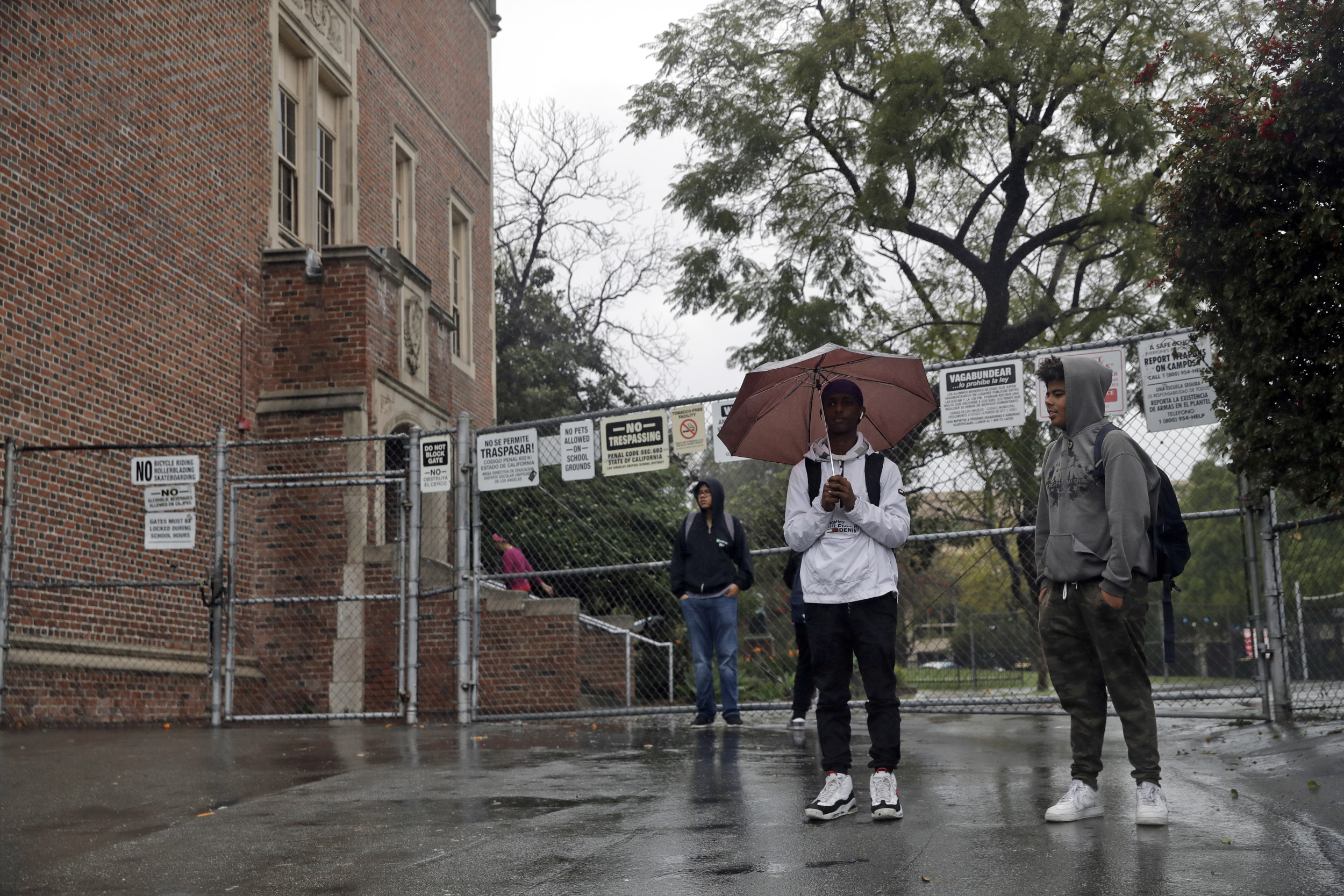CNN
—
The Republican-led Senate moved Wednesday to overturn key Biden-era waivers allowing California to set its own vehicle emissions, a major blow to that state’s effort to regulate pollution from cars and trucks that could have broad environmental impacts for the rest of the country.
And they will do it bypassing the 60-vote threshold typically needed to approve such a measure, infuriating Democrats who warned Republicans — despite their promises not to — were weakening the legislative filibuster. Republican leaders denied that was their intent and vowed to preserve the filibuster forever.
Republicans were livid when at the end of former President Joe Biden’s term, the Environmental Protection Agency greenlit California’s plan to phase out the sale of gas-powered cars by 2035, shifting the state towards electric vehicles. Republicans say the California plan will hurt the US economy and impact the rest of the country because other states follow its emissions rules.
In response, they readied action under the Congressional Review Act, which allows Congress to claw back agency rules without needing 60 votes to overcome a filibuster.
Tensions have built for weeks as Senate Republicans deliberated behind closed doors about whether to push the measure through despite a finding from the House’s Government Accountability Office that the CRA could not be used to nullify the California emissions waiver. Senate Republicans don’t believe the GAO has the authority to determine that.
The Senate parliamentarian — the neutral arbiter of Senate procedure — deferred to the GAO viewpoint. Despite that, the Senate took a series of votes to put it on a track to pass these CRAs in the coming days.
California has for many years set its own emission standards separate from the federal government. For decades, federal law has granted California the authority to do so, but the waiver has become a partisan football in recent years. President Donald Trump revoked that authority during his first term in 2019, before Biden reinstated it in 2022.
In one of the Biden administration’s last major actions on climate, the EPA in 2024 finalized California’s waiver – effectively greenlighting the state’s plan to phase out sales of new gas vehicles by 2035, the first regulation of its kind in the US.
California’s vehicle regulations matter a great deal to the auto industry because close to 20 other states and the District of Columbia have adopted them. And they have a big impact on climate policy; emissions from vehicles are one of the largest sources of planet-warming pollution in the US.
Senate Majority Whip John Barrasso called California’s efforts a “fantasyland” that will hurt ranchers and farmers in his home state of Wyoming.
“California’s EV mandates ban the sale of gas-powered cars and trucks. They threaten the freedom of every American to choose what they drive,” he said on the floor. “EVs currently make up 7 percent of the U.S. market. Even in California, they account for only 20 percent of vehicle sales. And sales are stalling. Yet California’s radical mandates require 35 percent of all vehicle sales to be electric by 2026 – 6 months from now. By 2035, it jumps to 100 percent.”
Senate Democrats have argued that not accepting the parliamentarian’s guidance sets a dangerous precedent, and they are particularly concerned that the GOP may do it again as she sets some of the perimeters of what will be allowed in the massive tax, spending cuts and immigration reconciliation bill moving through Congress now.
“It’s going nuclear, plain and simple. It’s overruling the parliamentarian. And second, what goes around comes around,” Senate Democratic Leader Chuck Schumer told reporters on Tuesday, referring to the so-called nuclear option, which is when the majority party changes Senate rules on a party line vote instead of 67-vote supermajority typically required to make a change.
Democrats insist that the Californian regulations were created as “waivers” under the Clean Air Act, meaning that they are not considered “rules” that can be overturned through the CRA. The GAO — which weighed in on the issue when that chamber passed these CRAs recently with bipartisan support — agreed.
However, Senate Republicans insist that they are not defying the parliamentarian and have said that Democrats’ concern for weakening the filibuster is hypocritical, coming from the party that has expressed opposition to the filibuster’s role in recent years.
“The only people that have attempted to get rid of the legislative filibuster – the Democrats – every single one up there that’s popping off and spouting off has voted, literally, to get rid of the legislative filibuster,” Senate Majority Leader John Thune told reporters at a press conference on Tuesday.
“This is a novel and narrow issue that deals with the Government Accountability Office and whether or not they ought to be able to determine what is a rule and what isn’t, or whether the administration and the Congress ought to be able to make that decision,” he added.
Sen. Martin Heinrich of New Mexico, the top Democrat on the Senate Energy and Natural Resources Committee, echoed Schumer’s concerns in a statement ahead of Wednesday’s vote.
“If Senate Republicans force a vote on the California Clean Air Act Waivers, they set a precedent that will allow Congress to overturn nearly any agency decision nationwide,” he warned. “I urge my colleagues to reject this gross overreach.”
“By opening this door, Republicans threaten to destroy our permitting and regulatory system, leading to higher energy costs for Americans and making it impossible for new developments to come online. Indeed, nearly every major and minor project the federal government touches could be stalled, creating significant uncertainty if not complete chaos. That is not what the American people want, and it cannot be what Senate Republicans want, either,” continued Heinrich.































